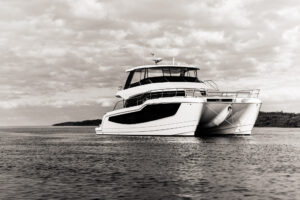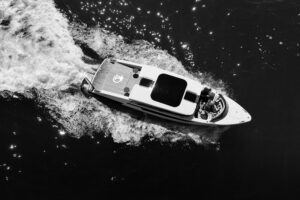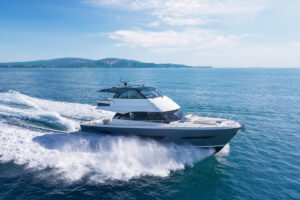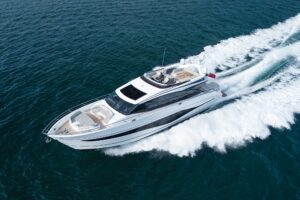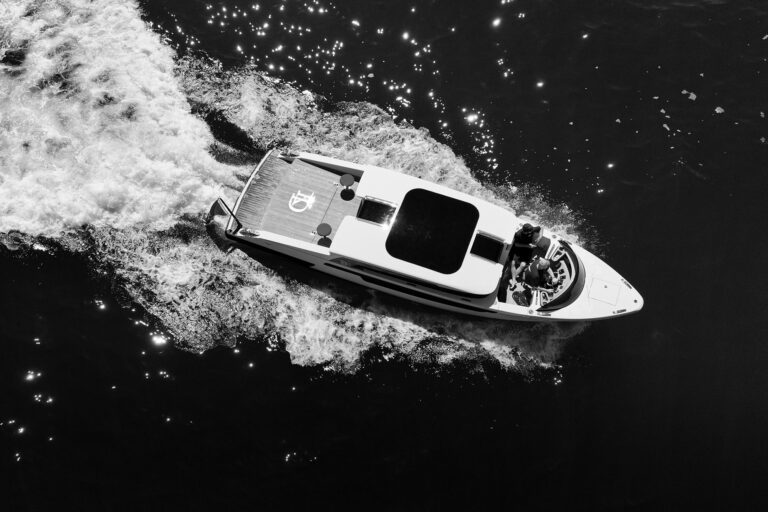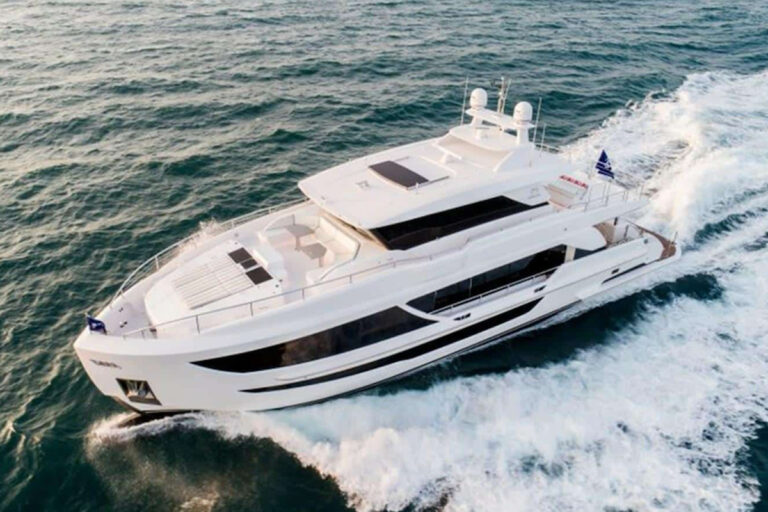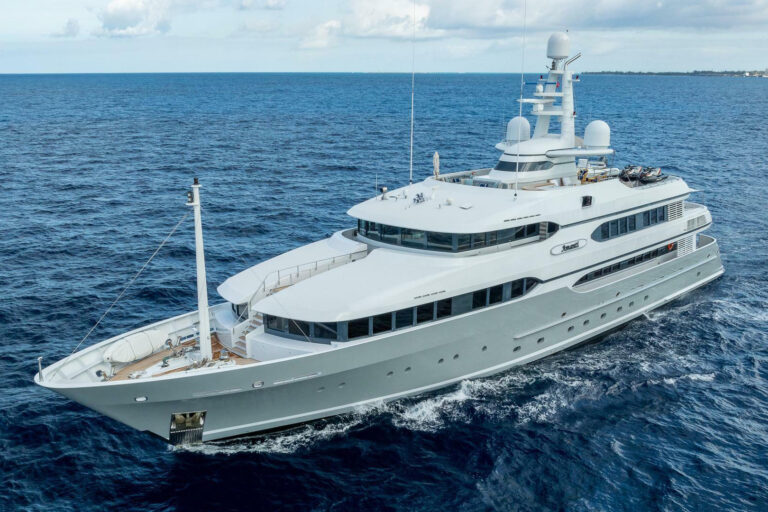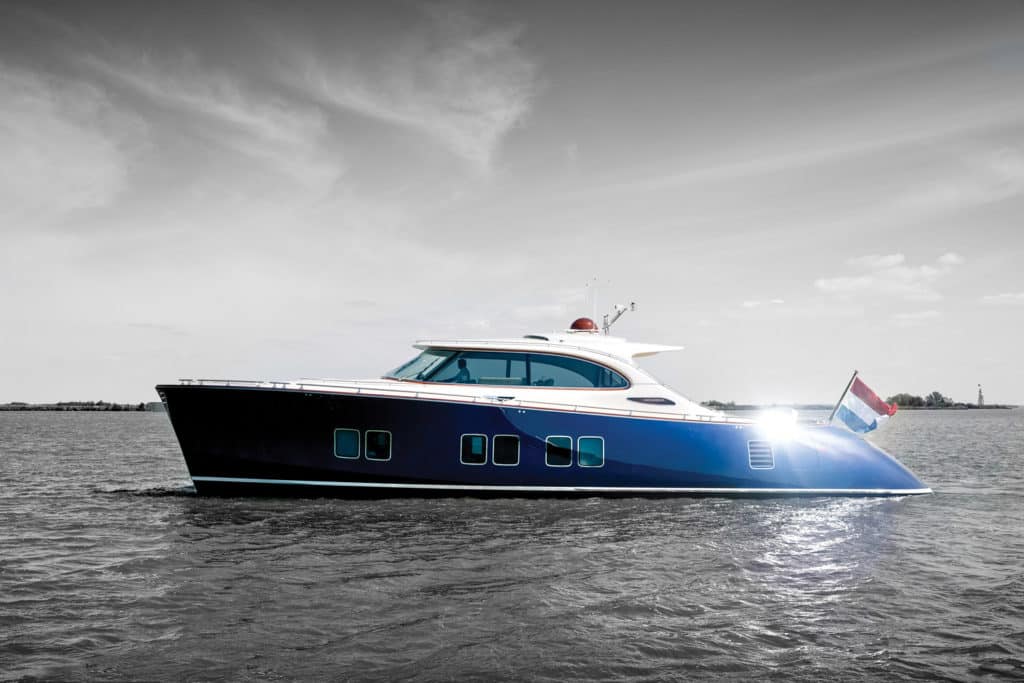
You can spot a Zeelander’s profile from afar, particularly because of its high bow and signature raked and rounded transom. Essentially, Zeelanders are modern commuter yachts with a retro twist. Credit for the styling goes to Dutch designer Cor D. Rover. His first Zeelander, the Z44, launched in 2008 and that model has since been joined by the Z55, and now the Z72.
I got aboard Hull No. 1 of the new flagship along the river Maas in the Netherlands, where Zeelanders are built. The river runs across the top of the Port of Rotterdam, from whence this Z72 will ship to Massachusetts to replace her owner’s previous Z55 at his summer home on Nantucket. She will winter in the Bahamas.
Stepping into the cockpit, I first saw the Z72’s bar, which is a work of art. What my eye initially registered as high-gloss woodwork, wasn’t. It was a paint job that created a faux grain for the bar, barstool backs and window frame. The same treatment is given to the aft deck’s table, the radome, the windshield surround and the cap rails, where the effect is like a zebrano wood on steroids.
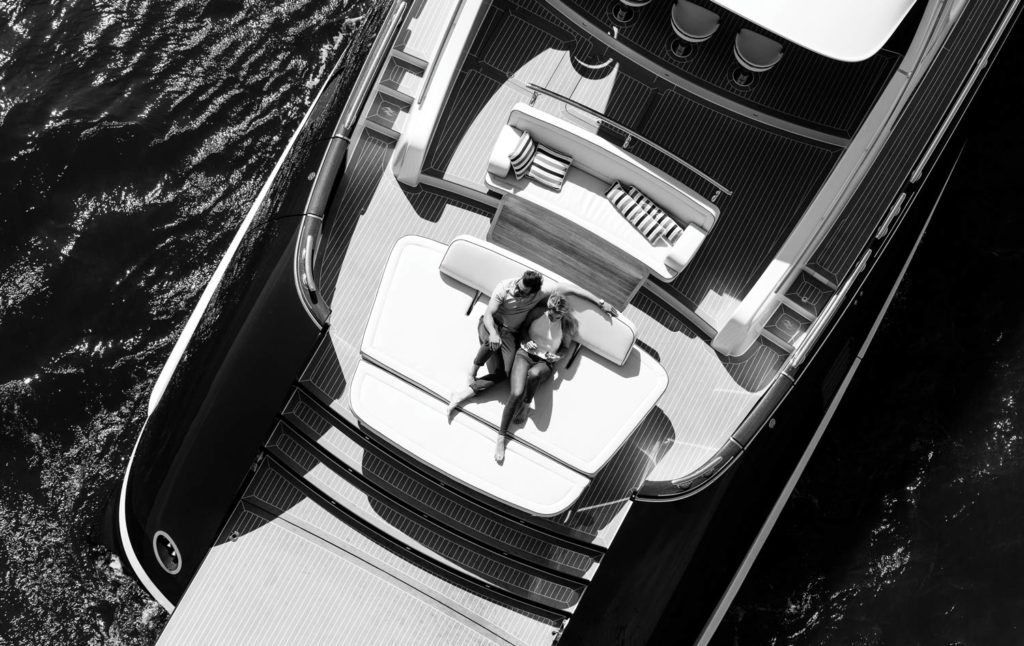
The window at the afterdeck bar drops down to connect the space with the galley aft, beyond which are booth seating and the helm station in the salon. The helm has three seats with reversible backs. Visibility is uninterrupted. Light and bright are often overused terms in our business, but not in this case. There is really very little structure to obscure a nearly 360-degree view. I’d go so far as to say this yacht has some of the cleanest sightlines I can remember. The windshield is a simply whopping piece of curved glass from U.S.-based ProCurve at roughly 10 feet, 8 inches wide and 3 feet, 6 inches high.
The owner of this Z72 selected dark leather tiles for the sole throughout the lower deck—an interesting choice. I liked them for their natural patination, which should improve with age and wear, and because they’re softer and a little warmer underfoot than a hard laminate.
Being a boutique builder, Zeelander offers several lower-deck configurations on the Z72. This first hull has three en suite staterooms, with the owner’s stateroom forward. There’s at least 6 feet of space between the master’s door and the berth, with square-shaped hull windows on either side, creating an open feeling.
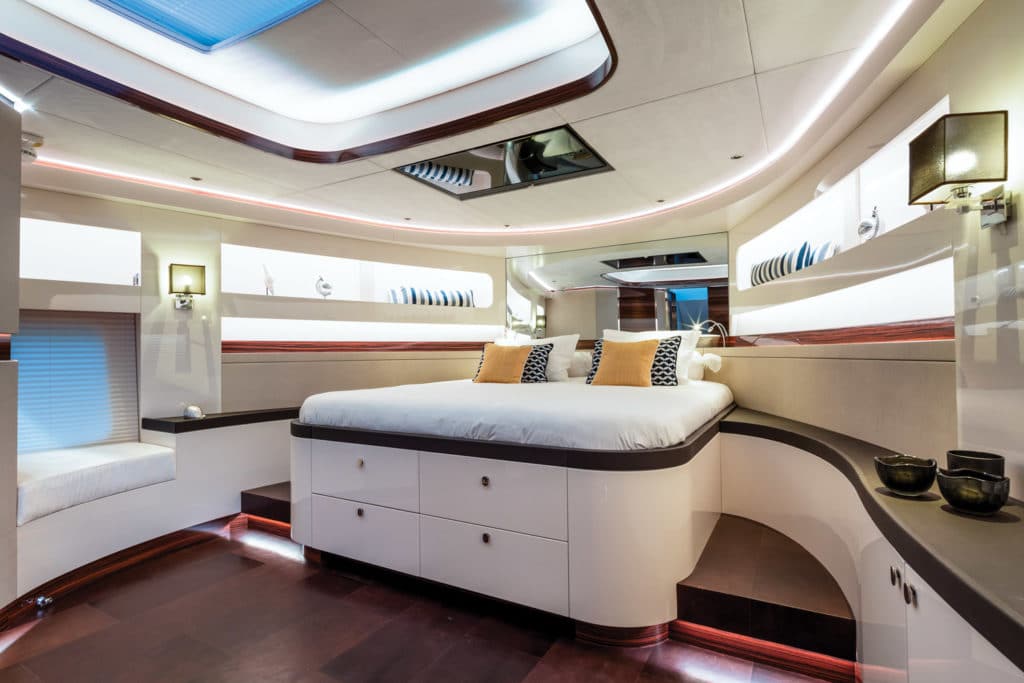
This owner configured the crew cabin with a single berth; it also can come with twins. Accessed via an afterdeck hatch, the crew space is finished to a similar standard as the guest staterooms, including having a rain shower in the head.
The Z72 is not just stylish. She offers brisk performance. Standard engines are triple 725 hp Volvo Penta IPS950s, which should deliver 28 to 29 knots at top hop, according to Zeelander. Hull No. 1 has the biggest engine combination available: triple 1,000 hp Volvo Penta IPS1350s with Q7 props and Active Ride Control trim tabs. The wing pods steer with the middle pod is fixed.
At just under half-load, this Z72 was on plane in a little more than 10 seconds. In about 30 seconds, she whisked along at a hair over 42 knots with the diesels spinning at their maximum 2,370 rpm. She delivered a 40-knot average from reciprocal headings along a reasonably fast-flowing waterway.
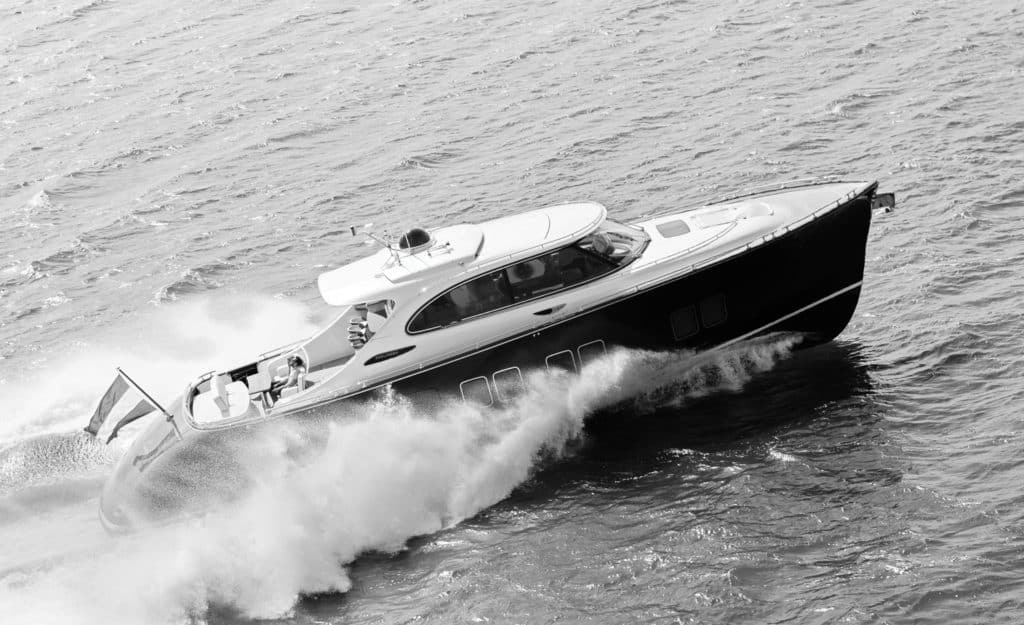
In proper cruising mode with full tanks and throttled back to 10 knots (600 to 650 rpm), the Z72 could cover more than 1,800 nautical miles before heading for the fuel pumps, and that’s allowing for a 10 percent reserve. At 35 knots, owners could manage about 450 nautical miles, which means just over 13 hours, or a full day’s fast cruise. Most are likely to want something in between.
Whereas a Dutch contract-molding specialist laminates smaller Zeelander models, an Estonian contractor produced the Z72’s hull and superstructure. Both sections are infused using vinylester resin and closed-cell foams, and then post-cured at 140 degrees Fahrenheit for four days. The construction felt solid and relatively quiet on the water. My sound meter registered a little more than 77 decibels at the helm at her top speed; 65 decibels is the level of normal conversation.
The Z72’s tender garage is an unusual feature for a yacht of this size, and its transverse configuration is noteworthy. The garage is amidships with a lift-up door to starboard and large enough to accommodate a Williams Turbojet 325 plus a smaller personal watercraft or a rack of Seabobs. There’s a watertight crawl-through door from the tender garage to the engine room, with main engine-room access from a cockpit hatch that lifts up.
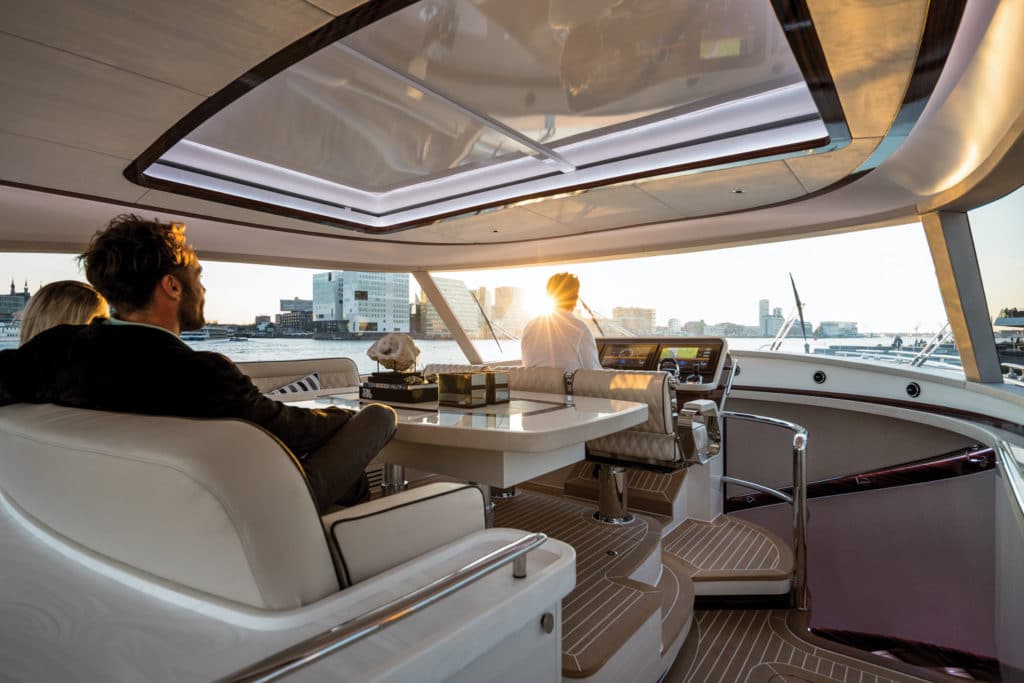
Beyond the IPS engines, other notable options aboard this yacht include metallic paint, a Quick gyrostabilizer, Volvo Penta’s Dynamic Positioning System, a five-year factory warranty on the engines, and various TracPhone and Vision Marine equipment. The sun pad aft can be swapped for a hot tub.
The ability to design a yacht with a retro aesthetic that could have wide appeal, and the use of a thoroughly modern build process, is no small combination. Zeelander has achieved it in the Z72. Her style should stand the test of time.
Take the next step: zeelander.com

